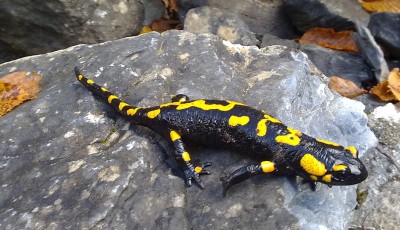Scientist Call For Ban on Salamander Imports
Between the years of 2010 and 2014, Los Angeles alone imported 419,890 salamanders, either for zoos or personal pets, from which a vast majority of 418, 682 are vulnerable to Bsal infections.
The Asian salamanders are believed to be immune to the fungus, but Bsal poses a significant threat to the animals living in North America, which have been proven to be highly vulnerable to fungus in general. They have asked the U.S. Fish and Wildlife Service to immediately ban the importation of live salamanders until controls are in place to prevent the spread of this deadly fungus. Recent studies have shows that at least two U.S. salamander species are very susceptible to the new pathogen. The main carriers of the fungus are believed to be the Tam Dao or Vietnamese salamander, a.k.a. Paramesotriton deloustali, the blue tailed fire bellied newt, a.k.a. Cynops cyanurus and the Japanese fire belied newt, also known as Cynops pyrrhogaster.
A paper describing the potential effects of the fungus on U.S. and Mexican salamanders will appear in the July 31 issue of the journal Science.
Bd, killed 40% of the amphibian species by hardening their skin and interfering with the electrolyte regulation and causing cardiac arrest after disrupting their trademark ability to adapt their body temperatures. It has already hurt the salamander population in Belgium, the Netherlands, and other parts of Europe, and now it’s treating to spread to North America.
Co-author Vance Vredenburg, who has studied the chytrid or Bd fungus for more than a decade, noted that more than 200 species of amphibians have gone extinct or are near to extinction as a result of infection, making it the most devastating infectious wildlife disease ever recorded.
Scientists proposed stopping the importation of salamander to prevent the spread of the fungus particularly in high risk regions such as Sierra Nevada.
Vredenburg said that this is an impending danger, and a policy could have a very beneficial effect. In many North American ecosystems, salamanders are the most abundant vertebrates, and they are top predators of insects and other invertebrates, Vredenburg said, per The Guardian. A newly discovered pathogen may easily spread wipe them all in a matter of days. “This fungus puts at risk an important part of a healthy forest”. If the import continues, it can become a huge threat for US salamanders.
“California salamander populations are already way down because of the drought”, Wake said. There still may be trouble ahead, because previous efforts at banning the import of live salamanders have failed, and some are anxious that government officials may not act soon enough to impose tougher controls or a ban on imports for the lucrative pet trade, The Guardian reports.









